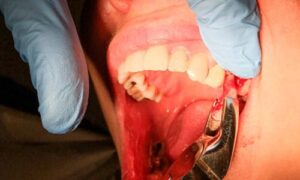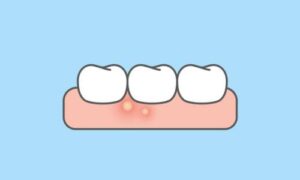Many people are quick to invest in Invisalign braces for dental care. They are virtually invisible, removable for eating and cleaning, and more comfortable than conventional metal braces. Though many people are unaware of it, Invisalign braces have some drawbacks, which can be problematic for some patients.
HOW DOES INVISALIGN WORK?
A patient’s unique series of aligners are created using a 3D modeling program. Patients wear these aligners for roughly two weeks before changing to the next set. Depending on each patient’s unique circumstances, the entire course of treatment can take anywhere from 9 months to 1.5 years on average. Some patients only record the first six months of their treatment. Patients should visit the dentist every six weeks for adjustments and checkups. The dentist will evaluate how the treatment is going during these appointments and make any necessary modifications to ensure the aligners function correctly. The aligners gently apply pressure to move the teeth into the desired position over time. Repeating this procedure until the teeth are in their ideal alignment gives the patient a straighter smile.
IMPLICATIONS FOR INVISALIGN
Before beginning Invisalign treatment, people frequently have the following questions:
- How does it function?
- What is the price?
- Will my teeth look truly perfect after the procedure?
- What drawbacks are there to using Invisalign?
- Is it painful?
- How long does a typical treatment last?
- Can I consume food and liquids generally while using Invisalign aligners?
These queries may raise expectations and preconceived notions about the course of the treatment and its efficacy.
Customers frequently expect shorter wait times for treatments, lower costs, and an improved smile. Invisalign braces are, in fact, a fantastic option for a lot of patients, but there are a few significant side effects to be aware of.
WHAT COULD HAPPEN WHEN WEARING INVISALIGN?
Gum and Tooth Sensitivity
Tooth and gum sensitivity is among the most frequent complaints about Invisalign. This happens when the aligners repeatedly irritate the teeth and gums by rubbing against them. This sensitivity can be very bothersome for some patients because each set of aligners must be worn for two weeks. As the mouth gets used to having the aligners in, they may momentarily alter speech patterns. However, after wearing the aligners consistently for a few days or weeks, most patients discover this problem goes away independently.
Discreet Speech Barriers
It is also known that wearing Invisalign braces may cause mild speech impediments. Patients may slur or murmur their words due to the aligners changing how their teeth fit together.
Hard to Maintain a Clean
Cleaning Invisalign braces can be challenging. The removable nature of the aligners makes it difficult to clean them thoroughly. Before placing them back into their mouths, patients must thoroughly clean them with water, toothpaste, or mouthwash. Bacteria can grow on patients’ Invisalign braces if they don’t keep them clean, resulting in bad breath and tooth decay.
Treatment Period
According to word of mouth, those receiving Invisalign treatment are expected to wear them for an additional six to nine months. When your teeth initially don’t move as intended, this occurs.
Effectiveness
The aligners may not always give you the desired results, either because you didn’t wear them for the recommended time or because your provider is inexperienced with mapping aligners.
Prices for traditional braces are different.
The cost of Invisalign can vary depending on your treatment strategy. Please get in touch with our office immediately to receive the most accurate quote for your Invisalign treatment. Various factors, including the complexity of your case and the length of your treatment, can affect the price of Invisalign. Speaking with our office to get a customized quote and determine the best payment plans for your Invisalign journey is crucial.
How to ensure that your experience with Invisalign is positive
The majority of Invisalign providers provide no-cost consultations. You are under no obligation to choose that provider after this free consultation. You can check out several orthodontists before selecting the one who makes you feel comfortable.
During the initial consultation, the dentist will examine your teeth, mouth shape, and bite (overbite, underbite, etc.). After that, they will inform you if Invisalign is a good option.
Many problems can be resolved with Invisalign, but not all of them. According to your dentist or orthodontist, Invisalign can be replaced with braces or jaw surgery.
Remember that you are not required to choose the first provider you meet with for your initial consultation. Choose the option that gives you confidence in the procedure.
CONCLUSION
Invisalign can help you, overall, to correct your overbite, underbite, misaligned teeth, etc. Invisalign has many advantages, including comfort, invisibility, and the ability to wear and remove them at will. Despite these advantages, there are some drawbacks as well.
Many individuals anticipate that Invisalign will be less expensive than braces, take less time to complete treatment and give them their ideal smile. However, this might not be possible without the proper provider and the diligence of wearing Invisalign.
Additionally, Invisalign costs more than conventional braces. This may be because they are a more recent invention than braces, which date back to the 17th century and were created in the middle of the 1990s!
Remember to select a qualified provider, preferably with cutting-edge technology, and wear your aligners for 20 to 22 hours daily. This will guarantee that your treatment goes as smoothly as possible and that you get the smile of your dreams.
Faqs
1. How does Invisalign work?
Invisalign treatment involves wearing clear aligners that gradually move your teeth into the desired position over time. These aligners are custom-made for your teeth and are replaced approximately every two weeks.
2. How long does Invisalign treatment usually take?
The duration of Invisalign treatment varies depending on the complexity of your case. On average, it takes about 9 to 18 months. Some instances might see results in as little as six months, while more complex issues might take longer.
3. Is Invisalign treatment painful?
In general, Invisalign treatment is less painful than traditional braces. However, some people may experience temporary discomfort or soreness when transitioning to a new set of aligners. This discomfort typically subsides within a few days.
4. Can I eat and drink generally with Invisalign?
One of the advantages of Invisalign is that the aligners are removable, so you can take them out when eating and drinking. However, removing them only during meals and brushing your teeth before reinserting the aligners is recommended.
5. How often should I wear my Invisalign braces?
Wearing your Invisalign braces for 20 to 22 hours daily is recommended for optimal results. They should be removed only during meals and when cleaning your teeth.
More blogs to read:














